The 160m vertical is built out of a full size 25G tower sitting on an insulated base. The tower also supports the 80m wire 4-square which is suspended from rope guys extending from the top of the vertical. There is almost no impact on the 160m vertical from the presence of the 80m antenna. The tower has a large effective diameter which helps to broadband the antenna somewhat - a nice side benefit of using a tower on a band like 160m. The ground system is composed of about 80 in-ground radials varying in length from 70-150' depending on what obstacles were present in the radial field. The radials were put down using an ancient radial plow, seen here (green color gadget) being pulled behind the tractor. Radial field has about 60 runs of 1960-vintage 18 gauge solid insulated wire and some more modern 22 gauge Teflon-coated stranded wire for the balance of the runs. A length of #6 solid copper runs around the perimeter of the concrete tower base providing a solder tie point for the individual radials. The #6 is held in place by 3 short 5/8" ground rods which were put in to provide a basic safety ground (part of the county inspection requirements). 
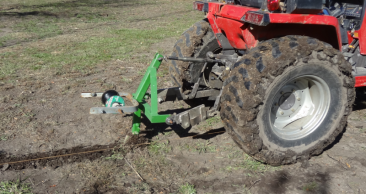
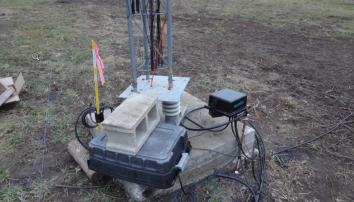
Shown here are the matching network box and the DXE 80m controller. The concrete block is a patented matching network box lid-keeper-onner. The 160m vertical is fed with about 325' of 1/2" hardline coming from the 40m tower So2r antenna switch. From the 40m tower the signal path includes and additional 500' of 7/8 hardline back to the shack. 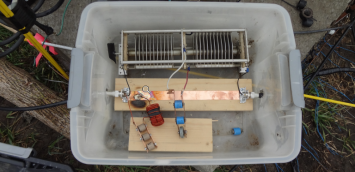
A series capacitor is sufficient to provide a nice and simple match. The blue caps visible in the picture provide padding for the variable cap. The red coil and brown caps are part of an 80m trap needed to make the 160m vertical less interactive with the 80m 4-square. 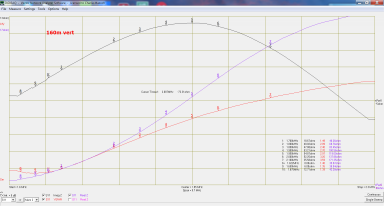
160m vertical - measured by VNA at the vertical's feed point. Click on the graph to see a clear version of the plot. At resonance (X=0) the feed point resistance is 36 ohms suggesting the ground radials are doing a good job. 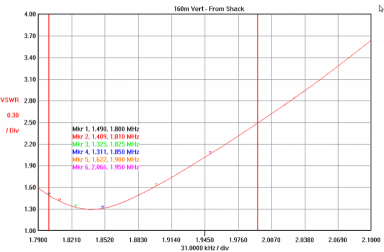
SWR plot of the vertical - measured at the shack. The point of minimum SWR can be trimmed with the variable cap at the feed point. The SWR is a bit high near the top of the band but well within the range of the matching net in the amp. There are unused relay control lines extending to the 160m tower and should it be necessary, by adding an extra relay or two and a couple of padder caps to the tuning network, the entire band could exhibit <1.5:1 SWR under the auto-magical control of the Microham system. |